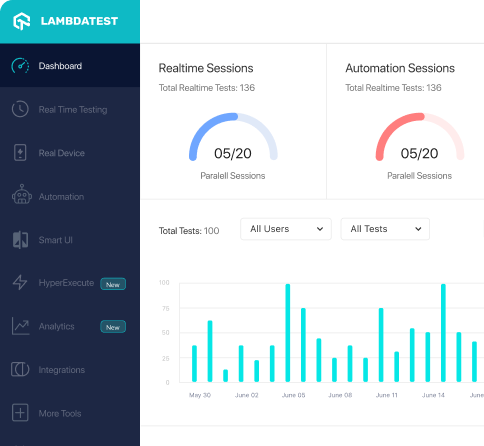How to use FactoryQueueStat class of org.cerberus.crud.factory.impl package
Best Cerberus-source code snippet using org.cerberus.crud.factory.impl.FactoryQueueStat
Source: FactoryQueueStat.java
...19 */20package org.cerberus.crud.factory.impl;21import java.sql.Timestamp;22import org.cerberus.crud.entity.QueueStat;23import org.cerberus.crud.factory.IFactoryQueueStat;24import org.springframework.stereotype.Service;25/**26 * @author vertigo27 */28@Service29public class FactoryQueueStat implements IFactoryQueueStat {30 @Override31 public QueueStat create(long ID, int globalConstrain, int currentlyRunning, int queueSize, String usrcreated, Timestamp datecreated, String usrmodif, Timestamp datemodif) {32 QueueStat obj = new QueueStat();33 obj.setID(ID);34 obj.setCurrentlyRunning(currentlyRunning);35 obj.setGlobalConstrain(globalConstrain);36 obj.setQueueSize(queueSize);37 obj.setUsrCreated(usrcreated);38 obj.setDateCreated(datecreated);39 obj.setUsrModif(usrmodif);40 obj.setDateModif(datemodif);41 return obj;42 }43}...FactoryQueueStat
Using AI Code Generation
1FactoryQueueStat factoryQueueStat = injector.getInstance(FactoryQueueStat.class);2IFactoryQueueStat factoryQueueStat = injector.getInstance(IFactoryQueueStat.class);3IFactoryQueueStat factoryQueueStat = injector.getInstance(org.cerberus.crud.factory.IFactoryQueueStat.class);4FactoryQueueStat factoryQueueStat = injector.getInstance(org.cerberus.crud.factory.impl.FactoryQueueStat.class);5org.cerberus.crud.factory.impl.FactoryQueueStat factoryQueueStat = injector.getInstance(org.cerberus.crud.factory.impl.FactoryQueueStat.class);6org.cerberus.crud.factory.IFactoryQueueStat factoryQueueStat = injector.getInstance(org.cerberus.crud.factory.IFactoryQueueStat.class);7org.cerberus.crud.factory.impl.FactoryQueueStat factoryQueueStat = injector.getInstance(org.cerberus.crud.factory.impl.FactoryQueueStat.class);8org.cerberus.crud.factory.IFactoryQueueStat factoryQueueStat = injector.getInstance(org.cerberus.crud.factory.IFactoryQueueStat.class);9org.cerberus.crud.factory.impl.FactoryQueueStat factoryQueueStat = injector.getInstance(org.cerberus.crud.factory.impl.FactoryQueueStat.class);10org.cerberus.crud.factory.IFactoryQueueStat factoryQueueStat = injector.getInstance(org.cerberus.crud.factory.IFactoryQueueStat.class);11org.cerberus.crud.factory.impl.FactoryQueueStat factoryQueueStat = injector.getInstance(org.cerberus.crud.factory.impl.FactoryFactoryQueueStat
Using AI Code Generation
1import org.cerberus.crud.factory.impl.FactoryQueueStat;2import org.cerberus.crud.factory.IFactoryQueueStat;3import org.cerberus.crud.service.IQueueStatService;4import org.cerberus.crud.service.ITestCaseExecutionQueueService;5import org.cerberus.crud.service.impl.QueueStatService;6import org.cerberus.crud.entity.QueueStat;7import org.cerberus.crud.service.impl.TestCaseExecutionQueueService;8import org.cerberus.crud.entity.TestCaseExecutionQueue;9import org.cerberus.crud.factory.IFactoryTestCaseExecutionQueue;10import org.cerberus.crud.factory.impl.FactoryTestCaseExecutionQueue;11import org.apache.logging.log4j.LogManager;12import org.apache.logging.log4j.Logger;13import org.springframework.beans.factory.annotation.Autowired;14import org.springframework.context.ApplicationContext;15import org.springframework.context.support.ClassPathXmlApplicationContext;16import org.springframework.stereotype.Controller;17import org.springframework.ui.Model;18import org.springframework.web.bind.annotation.RequestMapping;19import org.springframework.web.bind.annotation.RequestMethod;20import org.springframework.web.bind.annotation.RequestParam;21public class QueueStatController {22 private static final Logger LOG = LogManager.getLogger(QueueStatController.class);23 private IQueueStatService queueStatService;24 private ITestCaseExecutionQueueService testCaseExecutionQueueService;25 @RequestMapping(value = "QueueStat", method = RequestMethod.GET)26 public String showQueueStat(Model model, @RequestParam(value = "id", required = falseBlogs
Check out the latest blogs from LambdaTest on this topic:
There is just one area where each member of the software testing community has a distinct point of view! Metrics! This contentious issue sparks intense disputes, and most conversations finish with no definitive conclusion. It covers a wide range of topics: How can testing efforts be measured? What is the most effective technique to assess effectiveness? Which of the many components should be quantified? How can we measure the quality of our testing performance, among other things?
In 2007, Steve Jobs launched the first iPhone, which revolutionized the world. But because of that, many businesses dealt with the problem of changing the layout of websites from desktop to mobile by delivering completely different mobile-compatible websites under the subdomain of ‘m’ (e.g., https://m.facebook.com). And we were all trying to figure out how to work in this new world of contending with mobile and desktop screen sizes.
When software developers took years to create and introduce new products to the market is long gone. Users (or consumers) today are more eager to use their favorite applications with the latest bells and whistles. However, users today don’t have the patience to work around bugs, errors, and design flaws. People have less self-control, and if your product or application doesn’t make life easier for users, they’ll leave for a better solution.
To understand the agile testing mindset, we first need to determine what makes a team “agile.” To me, an agile team continually focuses on becoming self-organized and cross-functional to be able to complete any challenge they may face during a project.
Web applications continue to evolve at an unbelievable pace, and the architecture surrounding web apps get more complicated all of the time. With the growth in complexity of the web application and the development process, web application testing also needs to keep pace with the ever-changing demands.
Automation Testing Tutorials
Learn to execute automation testing from scratch with LambdaTest Learning Hub. Right from setting up the prerequisites to run your first automation test, to following best practices and diving deeper into advanced test scenarios. LambdaTest Learning Hubs compile a list of step-by-step guides to help you be proficient with different test automation frameworks i.e. Selenium, Cypress, TestNG etc.
LambdaTest Learning Hubs:
- JUnit Tutorial
- TestNG Tutorial
- Webdriver Tutorial
- WebDriverIO Tutorial
- Protractor Tutorial
- Selenium 4 Tutorial
- Jenkins Tutorial
- NUnit Tutorial
- Jest Tutorial
- Playwright Tutorial
- Cypress Tutorial
- PyTest Tutorial
YouTube
You could also refer to video tutorials over LambdaTest YouTube channel to get step by step demonstration from industry experts.
Most used methods in FactoryQueueStat
Try LambdaTest Now !!
Get 100 minutes of automation test minutes FREE!!



